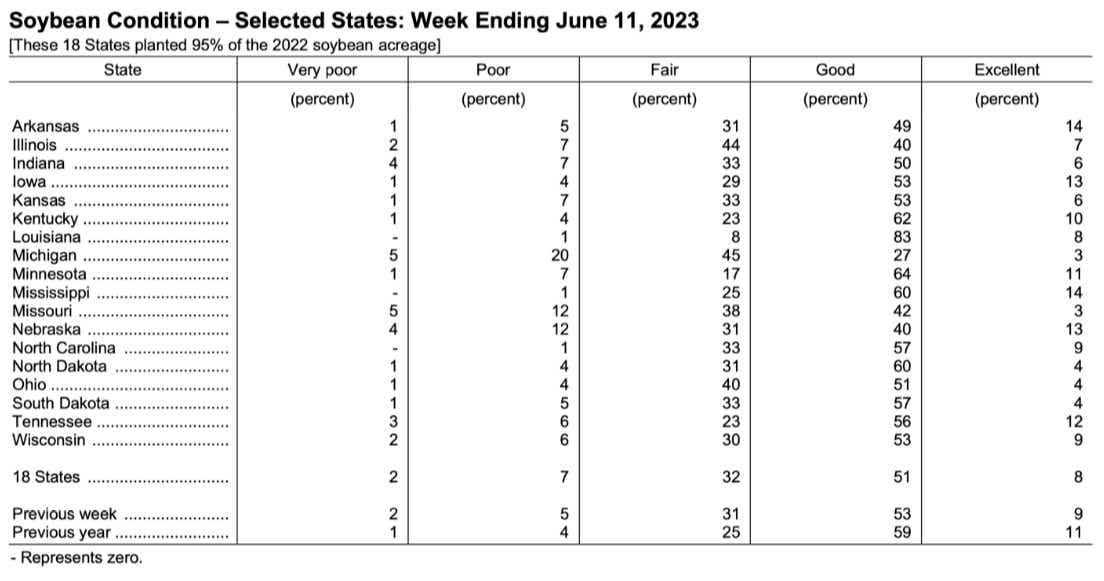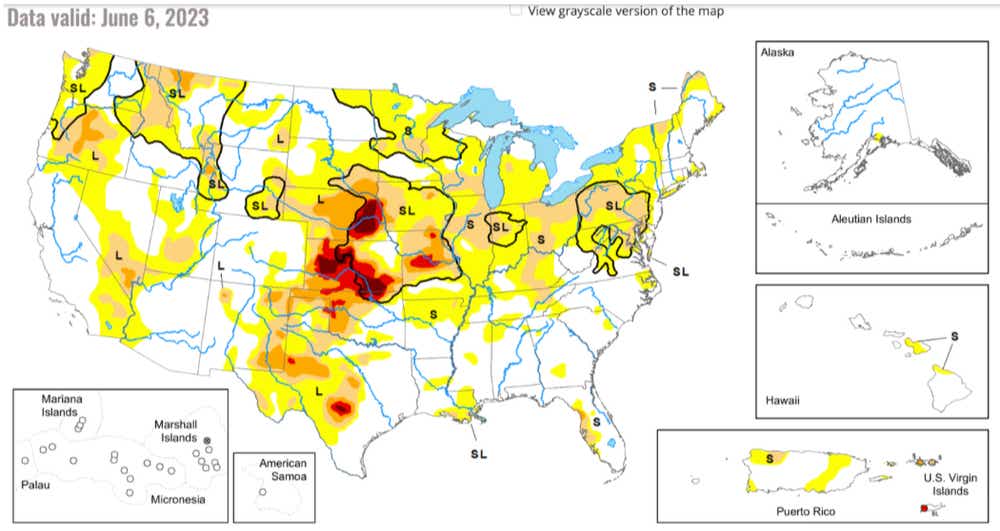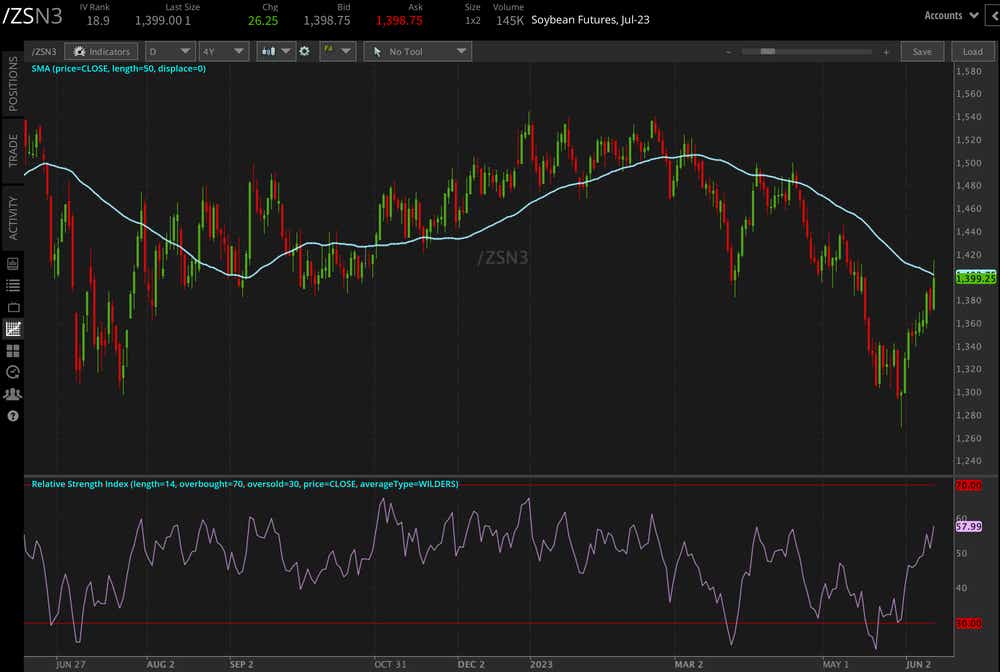Soybean Futures Rally on Poor Crop Conditions as U.S. Inflation Eases

Soybean Futures Rally on Poor Crop Conditions as U.S. Inflation Eases
Soybean Prices Rise on Dry Crop Conditions Outlook
Soybean prices (/ZS) surged nearly 2% on Tuesday, or about 26 cents per bushel, to the highest level since mid-May as dry weather conditions across the United States soy planting heartland point to sub-par conditions for the growing season.
The planting season for soybeans has nearly wrapped up across the U.S., with 96% of the crop planted as of June 11, according to the USDA’s crop progress report released on Monday. While that is ahead of the 86% 2018-2022 average, the outlook due to soil moisture is dim.
Soybean conditions across 18 states total 51% for “good’ and 8% for “excellent” conditions as of June 11. That compares poorly to the prior year when conditions stood at 59% and 11%, respectively.

Image Source: usda.library.cornell.edu
Those numbers will have to improve over the coming weeks or prices will likely continue to face upward pressure. However, drought conditions exist across much of the soy-planting states, especially in the Upper Plains and the Midwest, where a bulk of soy is produced.
For that to happen, soil moisture will need to increase, which requires precipitation and mild conditions. If we look at the NOAA’s 8–14 day temperature and precipitation outlook, we see that there is above-normal probability for above average temperatures and only a slightly above-normal chance for precipitation in a portion of the Upper Plains.

Image Source: droughtmonitor.unl.edu
Russia Threatens to End Black Sea Export Deal…Again
More talk from Russian President Putin on potentially ending the Black Sea export has supported the broader agricultural market in recent weeks. Mr. Putin stated recently that Russia is exploring options to end the deal but so far, no decision has been made.
While soybeans wouldn’t be impacted to a great degree, wheat would. That could indirectly drive up the demand for the legume in countries that would be affected by such a move. For now, however, this is just something to keep an eye on for soybean traders.
Will Soybean Prices Throw a Wrench into Cooling Price Pressures?
U.S. prices cooled to 4% from a year ago in May, according to the Labor Department’s report on Tuesday. Americans breathed a sigh of relief as the numbers crossed the news wires, with the annual rate now less than half of what it was last summer.
Can higher soybean prices ruin the downward pressure? Probably not. Soybean futures and spot prices are still about half the price that they were at this time last year. But if we get back to levels around $18 per bushel, and corn and wheat also doubled, then it would be time to worry.
Soybean Technical Analysis
The technical picture for soybeans compliments the fundamental backdrop for higher prices. Looking at the daily price chart, soybeans have reached its 50-day Simple Moving Average (SMA) after a strong first half of price action in June.
Additionally, the Relative Strength Index (RSI) has crossed above its mid-level 50 mark, indicating healthy upward momentum. If we get a daily close above the 50-day SMA in the short-term, that could facilitate higher prices on a technical basis.

Options involve risk and are not suitable for all investors. Please read Characteristics and Risks of Standardized Options before deciding to invest in options.